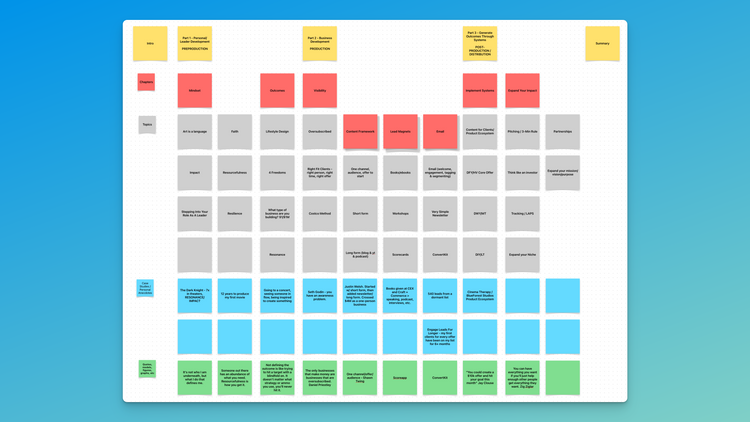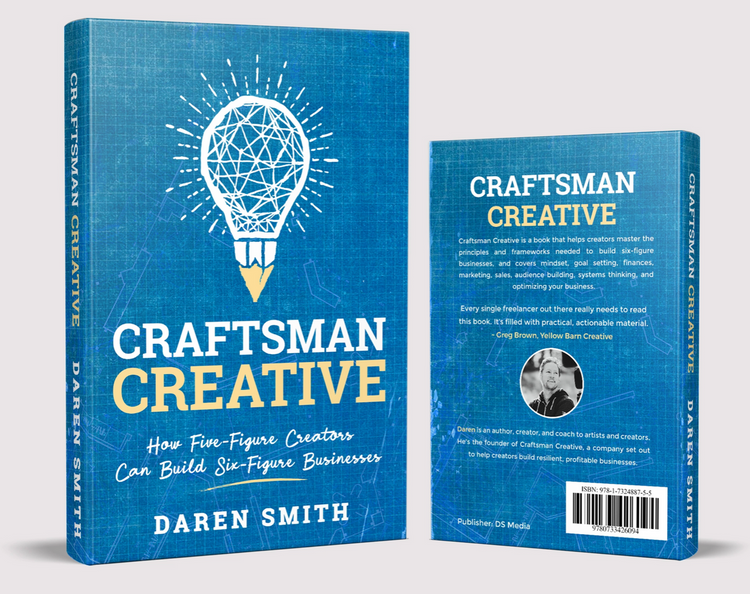Take Massive Action Toward The Achievement Of Your Goals

There's one last step to take now that you have your vision and your purpose and mission in place.
That step is to take action.
We could spend an entire book going into more and more detail on every aspect of the process, from honing in your vision to discovering the deep purpose that's inside you, better aligning your mission and your goals to that purpose, and on and on.
But none of that matters if you don't take action!
So you take your vision, and your plan, and your goals, and you do something with faith that it will work out.
In this chapter, I'll outline a process for taking massive action at the start so that you get off on the right foot.
Commit to a two-week sprint
The reality is that with any new project or business, it will take time for it to become a reality.
But that's not always what we want! We want instant results from our efforts. But spending a little time one day, then a few days off, then a little more time here and there, then another day off, creates zero momentum and nearly zero results.
There's a better way for those who desperately want the results set in the previous chapter.
Start with a sprint.
What is a sprint?
Glad you asked. A sprint is a short period of time that you give everything you have to the mission or goal at hand.
That means getting up early, staying up late, working during your lunch break and your commute, every waking hour that you can spare goes into this project.
But, again, for a short period of time.
The intention is to create some momentum around your work that can continue once you let off the gas. The amount of momentum required is different for every project, but the more you do this process the better you'll get at recognizing when you have hit that point.
It feels like when you're riding a bike and you're pedaling as hard as you can, but then the road starts to slope downward, and the speed of the bike is greater than your ability to keep up your pedaling speed.
More effort at that point doesn't make you go any faster. In fact, you can slow your pace to a nice easy pedal and still move forward.
That's what we're creating by doing a sprint at the beginning.
The opposite approach that most people make is that they spend a few minutes here, a few minutes there, and never build any momentum because it's like hopping off the bike and expecting it to keep moving on its own.
Your project or business deserves more effort than that, so that's what we're going to do with this sprint.
The reason this chapter is part of the Mindset section is that it's not about what you do that matters - the strategy or tactics that will follow in later chapters. It's about doing it, which is 100% determined by your mindset.
Preparing for a Sprint
Now, just as you need to learn a bit about riding a bicycle before you take off at full speed, you need to do the same for your business.
Looking at your goals and your plan from the last chapter, a sprint is about condensing four to six weeks of work into two.
That requires planning.
In order to sprint, you can't be thinking about how to shift gears, which lever is the brake, or how to balance on the bike.
You have to have all of that already in place.
So, for your two-week sprint, you need to have a very clear plan so you can focus 100% on execution.
Let's take the goal of growing an online community on a social network like Twitter. There are dozens (hundreds?) of courses you can take about how to grow your following on Twitter.
I know, I've taken about five of them...
Yet, none of them moved the needle!
Were they lying to me? Giving me bad suggestions? Did I just suck so badly that no one wanted to follow me?
NO!
I approached it as a lazy stroll in the park. A little here, a little there, take a week off to focus on something else.
It wasn't until I committed to a two-week sprint that the results finally happened.

What that sprint looked like was informed by my plan, so that's what you're going to do now by asking this one simple question:
What one action, done consistently over the next two weeks, will help me build momentum and achieve my goals?
That's it.
For me and my Twitter growth, it was scheduling tweets so that I was posting at least 5x per day, and commenting on 10-20 other tweets every day on accounts that were bigger than mine.
That's. It.
Before, I would randomly tweet here and there, take a day off, and had no plan.
A plan + massive action = momentum.
So, choose one of your goals from the last chapter, and ask yourself what action, or actions, done consistently over the next two weeks will help you get the momentum you need to achieve the goal.
Important note - don't sprint on more than one goal at a time! Choose just one, and do a sprint on that goal.
You'll want to take 2-4 weeks off from that one before moving to the next, to ensure that the momentum stays and you're able to achieve the goal.
Bigger goals, ones that will take more than 90 days to achieve, will use the same approach, but instead of going from 60mph down to 5mph, you'll only back off the gas a little to 35-45mph. That way you don't lose momentum but can work at a sustainable pace without burning out.
Notice you never go "into the red" and push to 100mph. That's a recipe for burnout, which you want to avoid.
(Yes, I realize I switched from a biking metaphor to a driving metaphor, but hopefully you're still with me.)
Open up your calendar, and schedule time every day for the next two weeks to work on your sprint for at least 1-2 hours per day.
That can be an hour in the morning and an hour at night, or a two-hour block of time during the day, but schedule it now.
Again, this is about taking action, not just having ideas and even plans. A plan without action is just a dream.
And dreams don't pay the bills.
If you're working on writing a book, then you need to write for 1-2 hours a day during the sprint.
If your goal is to book more clients, then you need to set aside 1-2 hours a day to find new leads and reach out.
If you want to start a new community online then you need to dedicate 1-2 hours a day to inviting people to the community, engaging people there, and growing it to a point where it's more self-sustaining.
This is what it takes. This is what professional creators do to succeed and reach their goals.
Being "prolific" isn't some God-given talent or blessing. It's about showing up every day and doing the work.
You're going to be prolific for the next two weeks and take massive action toward the achievement of your goals.
And at the end, if you do the work and take massive action, you'll have proven to yourself that you can do this, that you're capable, that what you're creating is possible, and that you have so much to contribute to the world and the people you seek to serve.
Schedule it now in your calendar, and take massive action.
NEXT CHAPTER >

< PREVIOUS CHAPTER








Member discussion